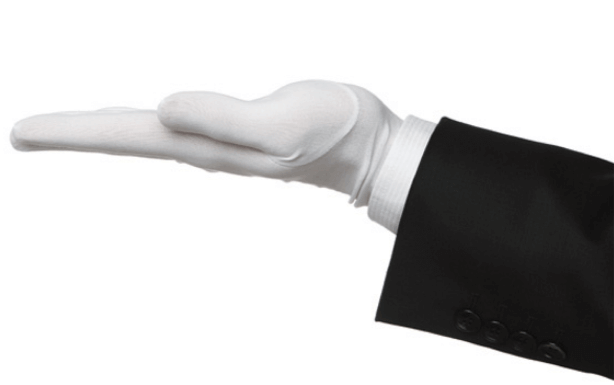
It also indicates that a company has more funds to reinvest back into the future growth of the business. Most software offers ready-made report templates, including a statement of retained earnings, which you can customize to fit Bookkeeping for Etsy Sellers your company’s needs. Retained earnings are reported in the shareholders’ equity section of a balance sheet. If for instance, the company incurred losses of $100,000 the journal entry for the loss will be recorded as shown below. Retained Earnings are credited with the Net Profit earned during the current period. The general ledger accounts that are not permanent accounts are referred to as temporary accounts.
- The amount of additional paid-in capital is determined solely by the number of shares a company sells.
- It shows a business has consistently generated profits and retained a good portion of those earnings.
- So, if you’re looking at a balance sheet and you see a credit balance in the Retained Earnings account, it means the company has accumulated earnings over its lifetime.
- Effectively managing retained earnings is essential for long-term success.
- Journal entries for retained earnings are made when the company transfers its net income to the income summary account and when dividends are paid out.
Where to find retained earnings in the balance sheet?

Accumulated other comprehensive income is a separate line within the stockholders’ equity section of the balance sheet. … It is analagous to retained earnings which is accumulating the revenues and expenses that are reported on each period’s income statement. Income statement accounts, such as revenue and operating expenses accounts, should not be included.

What are the rules for journaling and trial balance?
- You can, however, keep track of retained earnings on a separate financial statement called the statement of retained earnings.
- Hence, retained earnings are the portion of a company’s net income that is set aside by the company for various operational purposes after dividend payments to its shareholders.
- It’s a measure of the resources your small business has at its disposal to fund day-to-day operations.
- If a company no longer has any retained earnings on its balance sheet, then it typically can’t pay dividends except in extraordinary circumstances.
- The general ledger accounts that are not permanent accounts are referred to as temporary accounts.
- This indicates that the company has sustained more losses than profits and may be in financial distress.
At the end of year three, Josh, Inc. has a $30,000 balance in its RE account (10,000 + 25,000 – 5,000). See how it’s a cumulative running tally of the corporate earnings and losses? The retained earnings account is never closed and will always maintain a balance even if it has a deficit. Retained earnings are one of the options available to a company’s shareholders when distributing profits at the end of an accounting period.
Positive retained earnings
In between the opening and closing balances, the current does retained earnings have a credit balance period net income/loss is added and any dividends are deducted. Finally, the closing balance of the schedule links to the balance sheet. This helps complete the process of linking the 3 financial statements in Excel.
Whether positive or negative, retained earnings appear at the top of the liabilities side of the balance sheet, as part of the company’sshareholders’ equity. A statement retained earnings template is a financial document used to report changes in retained earnings over a specific period. It typically includes the beginning retained earnings, net income, dividends paid, and ending retained earnings. Appropriate retained earnings refer to the portion of retained earnings that a company sets aside for specific purposes, such as debt repayment, capital expenditures, or other long-term investments. These appropriations are often disclosed in the notes to the financial statements. Retained earnings refer to the portion of a company’s net income that is not paid out as dividends but is instead reinvested in the business or kept as reserves for future use.
Journal Entries for Retained Earnings

These funds are also held in reserve to reinvest back into the company through purchases of fixed assets or to pay down debt. Accumulated losses can lead to negative retained earnings, where the retained earnings account shows a debit balance. This indicates that the company has sustained more losses than profits and may be in financial distress. Calculating ending retained earnings involves adding the net income (or subtracting the net loss) for the period to the beginning retained earnings and then subtracting any dividends paid. This figure represents the total amount of retained profits at the end of the accounting period.
Retained earnings debit and credit journal entry for dividend payments
Retained earnings represents the cumulative earnings of a company that have been retained (i.e., not distributed to shareholders in the form of dividends) to reinvest in the business or pay off debt. When a company earns net income, it will credit the retained earnings account, thereby increasing its balance. Conversely, when a company incurs a net loss or declares dividends, it will debit the retained earnings account, thereby decreasing its balance. This amount originates from the net income of the company that is found on its income statement. This means that retained earnings typically increase with credits and decrease with debits. A positive credit balance indicates accumulated profits, while a negative balance may suggest accumulated losses or deficits.

- This means that retained earnings typically increase with credits and decrease with debits.
- It is useful to note that although the retained earnings account has a normal balance on the credit side, the company may have the debit balance of retained earnings instead.
- When distributions are declared by a company, the amount that will be paid as dividends to its shareholder is usually taken out of its retained earnings account on the date of the declaration.
- Therefore, the more often a company pays dividends to its shareholders, the more its retained earnings balance gets reduced.
- Examples of these items include sales revenue, cost of goods sold, depreciation, and other operating expenses.
- Another music store moved in across the street and Josh had a net loss of $5,000 for the year.
Within stockholders’ equity, this negative (or positive) amount of retained earnings is reported on a separate line. A company’s current cash or cash equivalents are not retained earnings. It’s a historical total of net earnings that hasn’t been paid income summary out to shareholders. All of a company’s retained earnings are either cash or equivalents (including marketable securities) or returned to the company. A trial balance is a bookkeeping worksheet that compiles the totals of all ledgers into equal debit and credit account column totals. A company maintains a trial balance on a regular basis, usually at the end of each reporting period.
